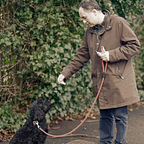The Daily Routine of a Judge in the UK
A judge in the United Kingdom has one of the most essential jobs on earth. They have an integral part of our society. They are responsible for many different roles, including ensuring that justice is served, upholding human rights, keeping people safe from harm, and defending democracy. Judges also take care of cases involving children’s welfare and adoption as well as mental health issues. But what does a typical day look like for these judges? What kind of training do they need before they can start their job? And how much money do they make each year? Well, let’s find out.
A typical day for judges will vary a lot from one person to the next, but they all have a few things in common. When they arrive at court, before coming into the courtroom itself, judges will go through security and get their passes checked to prove who they are. They then make sure all of the other paperwork is in order before heading into the courtroom.
First, the judges will sit at their desks and pick up all of the paperwork they are looking after for that day. These include witness statements, police reports, and even statements from representatives of charities or other organizations. They will then skim through the file to ensure everything is in the correct order and that any issues have been dealt with or amended.
The lawyers defending each case will then come up to the bench (the part of the desk that a judge sits at) and ask questions about all of the evidence they need to present. This includes phone records, CCTV footage, statements from witnesses, and much more…
When the lawyers are happy with the answers that they have got, they won’t then wait until a later date to go forward with their case — the judge will ask if either side is ready. If both sides agree that everything has been covered and they don’t need any more evidence, then the judge will decide based on the evidence they have seen. If either side has a problem with this, it will mean that the case will need to be sent to trial.
The judge will then put their decision into writing and release it within 24 hours unless the lawyers ask for an extension. They can also take advice from other judges or senior figures within the court if they need help with any of the issues. A judge will then get a break in the middle of their day and head out for lunch while the court is closed before coming back to do more cases when everyone has had time to eat.
Originally published at https://michaelwolkindqc.uk.
